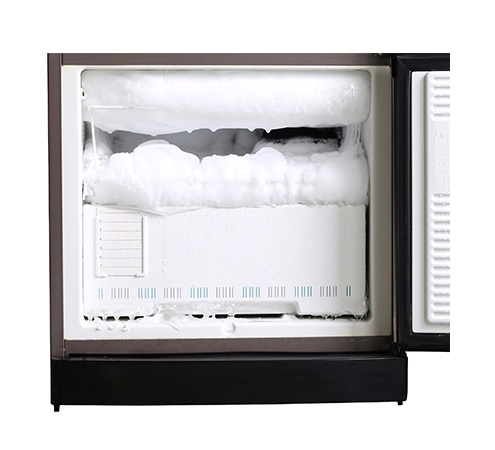How To Spring Clean Your Appliances
March 1, 2022 | Appliances and Appliance Care | DIY & Home Improvement | 1 comment
Spring is nearly here, a season of newness where leaves start appearing on the trees, buds blossom and homes sparkle, as people get stuck into intensive spring cleaning. If you’re planning to give your home a thorough once over in the upcoming weeks, don’t forget about your appliances. Giving the machines you use regularly a good clean will make your daily chores easier and help remove bad smells around your home too.
Revitalise Your Dirty Iron
If the base of your iron, the soleplate, is dirty and has started leaving grubby marks on your freshly washed clothes, you’re not alone. A build-up of residue on the soleplate is not an unusual problem; it’s usually caused by starch, melted synthetic fabrics or patch glue on your clothes burning onto your iron. Scrubbing at the residue with an abrasive cloth whilst the iron is cold is unlikely to clean the soleplate and could scratch and damage it.
A much better solution is a specialist cleaning paste that is applied to the iron when the soleplate is still hot and the dirty residue is most likely softer. Just squeeze some cleaning paste onto a pad of man-made cloth and rub it over your iron until clean, as per our demonstration in the below video.
Be careful not to burn yourself on the hot metal.
Once your soleplate is clean your iron should smoothly glide over your clothes again and remove creases with ease.
Descale Your Coffee Machine
Coffee machines in hard water areas will need descaling. If you’re getting sediment other than coffee grounds in the bottom of your coffee cup or you suspect a blockage in your machine, a build-up of limescale is the probable cause.
Limescale can provide a breeding place for bacteria and reduce the energy efficiency of your appliance, but it’s usually very easy to remove using targeted descaling products. Just add limescale remover to the coffee machine’s water reservoir according to the instructions on the packet and run the machine.
After you’ve descaled your coffee maker, run it twice through with clean water before preparing your next cup of coffee, to ensure all the limescale cleaner is out of the system.
Once your machine is limescale free it’ll be more hygienic, run more efficiently and your coffee will taste better too.
Remove Lingering Washing Machine Smells
Mould and bacteria in your washing machine can cause the drum and even your clothes to smell.
Smelly washing machines are quite a modern problem as washing detergents nowadays work just as well in low-temperature washes, but these cooler washes don’t flush bacteria out of your machine. Modern powders and capsules suitable for washing coloured clothes don’t contain the bleaching agents which previously killed bacteria either. So it’s best to counteract bacteria in your machine with regular use of a washing machine cleaner.
Choose a cleaner that descales as well as sanitises to remove build-up of limescale in your washing machine along with any mould and soap scum lurking in the internal workings.
Our video guide shows you how to use a washing machine cleaner to best target areas where bacteria builds up and eliminate those stale odours.
Defrost and Clean Your Freezer
Did you know a frosty freezer isn’t only a nuisance but also wastes money? It’s true; a freezer with lots of ice clinging to the walls is less efficient so has to work harder to keep your food frozen. These few extra pence of energy a day that an icy freezer uses soon add up, so it’s definitely worth removing frost when you notice it starting to develop.
When defrosting your freezer, plan ahead and use up as much of the food in it as possible, so you don’t have lots of food thawing while you clean it out. Before removing the ice take any remaining food and any removable shelves out of your freezer. Put down an old towel and turn the freezer off so the ice starts to melt. Once the ice is thin enough it can be removed with an ice scraper or defroster spray.
Don’t use a knife or sharp tool to try and pry ice out of your freezer. Doing so could pierce and damage your freezer walls and there is a possibility of the knife slipping and causing injuries! Once your freezer walls are ice-free, you can take the chance to wipe them down with disinfectant spray, to make sure your freezer is hygienically clean.
Cure A Smelly Vacuum Cleaner
If there is a large amount of dust and dirt in your vacuum cleaner it may start to smell as bacteria builds up. Getting rid of the smell could be as easy as emptying the vacuum or changing the dust bag, but you may need to give your filters, hose, attachments or reusable cloth dust bags a rinse.
Watch our handy video below to see how best to clean a smelly vacuum.
To avoid smells in future empty bagless vacuums after each use and change dust bags as soon as they get two thirds full. Dropping an air freshening stick into your dust bag will also help to freshen the smell of your vacuum for up to six weeks.
There are other machines around the home too, which could probably benefit from a good clean like your fridge or oven. But before you resign yourself to hours of scrubbing look into the specialist cleaning products available to take the elbow grease out of cleaning your dirty, smelly or under-performing appliances.
Tags: appliance care, Appliance Cleaning, Appliance Maintenance, Cleaning Products, Cleaning Tips, Spring Cleaning










One Comment
The Putney Cleaner
June 15, 2016 | 07:48 -
I just want to add one more thing when you decide to defrost your freezer If you are short with time, you could use a plastic bag. Just fill the plastic bag with hot tap water and put it into the icebox of your refrigerator. The hot water will defrost ice faster. It’s really a time-saving method.